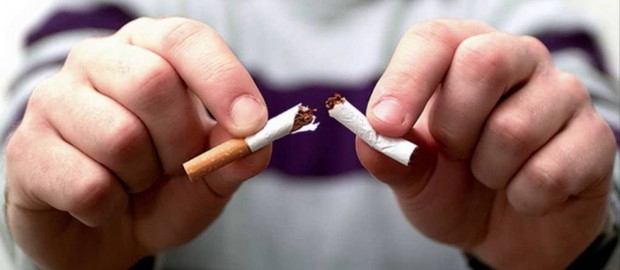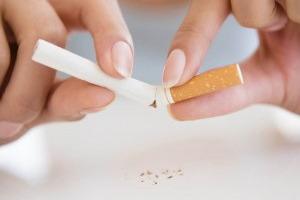
Media of Clinical Nutrition & Dietetics
Deciding To Quit Smoking And Making A Plan
Smokers often say, “Don’t tell me why to quit, tell me how.” There’s no one right way to quit, but there are some requirements for quitting with success. Key steps for quitting are covered here.
Make the decision to quit smoking
The decision to quit smoking is one that only you can make. Others may want you to quit, but the real commitment must come from you.
Think about why you want to quit.
- Are you worried that you could get a smoking-related disease?
- Do you really believe that the benefits of quitting outweigh the benefits of continuing to smoke?
- Do you know someone who has had health problems because of smoking?
- Are you ready to make a serious try at quitting?
Write down your reasons so you can look at them every time you want to smoke.
If you’re ready to quit, setting a date and deciding on a plan will help move you to the next step.

Set a quit smoking date and make a plan
What’s important about picking a Quit Day?
Once you’ve decided to quit, you’re ready to pick a quit date. This is a key step. Pick a day within the next month as your Quit Day. Picking a date too far away gives you time to change your mind. Still, you need to give yourself enough time to prepare. You might choose a date with a special meaning like a birthday or anniversary, or the date of your family members birthday. Or you might want to just pick a random date. Circle the date on your calendar. Make a strong, personal commitment to quit on that day.
How do you plan to quit?
There are many ways to quit, and some work better than others. Nicotine replacement therapy, prescription drugs, and other methods are available. Learn more about ways to quit so you can find the method that best suites you. It’s also a good idea to talk to your doctor and get their advice and support.
Support is an important part of your plan,tell your family, friends, and co-workers that you’re quitting. They can give you help and encouragement, which increases your chances of quitting for good.
Do quit smoking programs really work?
As you make your quit plan, you may wonder about success rates of the many different methods available. Success rates are hard to figure out for many reasons. First, not all programs define success in the same way. Does success mean that a person isn’t smoking at the end of the program? After 3 months? 6 months? 1 year? Does smoking fewer cigarettes (rather than stopping completely) count as success? If a method you’re considering claims a certain success rate, ask for more details on how success is defined and what kind of follow-up is done to confirm the rate.
It’s important to remember that quitting is hard. Quit smoking programs in general seem to have fairly low success rates, but they can still be worthwhile. Only about 4% to 7% of people are able to quit smoking on any given attempt without medicines or other help. Finding a program that fits your needs can make a difference.
What can I do to increase my chances of quitting?
Counseling and other types of emotional support can boost success rates higher than medicines alone. There’s also early evidence that combining certain medicines may work better than using a single drug.
Behavioral and supportive therapies may increase success rates even further. They also help the person stay smoke-free.

Prepare for your Quit Day
Here are some steps to help you get ready for your Quit Day:
- Pick the date and mark it on your calendar.
- Tell friends and family about your Quit Day.
- Get rid of all the cigarettes and ashtrays in your home, car, and at work.
- Stock up on oral substitutes – sugarless gum, carrot sticks, hard candy, cinnamon sticks, coffee stirrers, straws, and/or toothpicks.
- Practice saying, “No thank you, I don’t smoke.”
- Set up a support system. This could be a group program or a friend or family member who has successfully quit and is willing to help you.
- Ask family and friends who still smoke not to smoke around you, and not to leave cigarettes out where you can see them.
- Think about your past attempts to quit. Try to figure out what worked and what didn’t.
- Successful quitting is a matter of planning and commitment, not luck. Decide now on your own plan.
On your Quit Day
Over time, smoking becomes a strong habit. Daily events, like waking up in the morning, finishing a meal, drinking coffee, or taking a break at work, often trigger your urge to smoke. Breaking the link between the trigger and smoking will help you stop.
On your Quit Day go down this list:
- Do not smoke. This means not at all – not even one puff!
- Stay busy – try walking, short bursts of exercise, or other activities and hobbies.
- Drink lots of water and juices.
- Start using nicotine replacement if that’s your choice.
- Attend a stop-smoking class or follow your self-help plan.
- Avoid situations where the urge to smoke is strong.
- Avoid people who are smoking.
- Drink less alcohol or avoid it completely.
- Think about how you can change your routine. Use a different route to go to work. Drink tea instead of coffee. Eat breakfast in a different place or eat different foods.
- Be prepared to feel the urge to smoke. It will pass whether you smoke or not. Use the 4 D’s to help fight the urge:
- Delay for 10 minutes. Repeat if needed.
- Deep breathe. Close your eyes, slowly breathe in through your nose and out through your mouth. Picture your lungs filling with fresh, clean air.
- Drink water slowly, sip by sip.
- Do something else. Some activities trigger cravings. Get up and move around.
- Often this simple trick will allow you to move beyond the strong urge to smoke.

Benefits of Quitting Smoking Over Time
It’s never too late to quit using tobacco. The sooner you quit, the more you can reduce your chances of getting cancer and other diseases.
Within minutes of smoking your last cigarette, your body begins to recover:
20 minutes after quitting
Your heart rate and blood pressure drop.
12 hours after quitting
The carbon monoxide level in your blood drops to normal.
2 weeks to 3 months after quitting
Your circulation improves and your lung function increases.
1 to 9 months after quitting
Coughing and shortness of breath decrease. Tiny hair-like structures that move mucus out of the lungs (called cilia) start to regain normal function in your lungs, increasing their ability to handle mucus, clean the lungs, and reduce the risk of infection.
1 year after quitting
The excess risk of coronary heart disease is half that of someone who still smokes. Your heart attack risk drops dramatically.
5 years after quitting
Your risk of cancers of the mouth, throat, esophagus, and bladder is cut in half. Cervical cancer risk falls to that of a non-smoker. Your stroke risk can fall to that of a non-smoker after 2 to 5 years.
10 years after quitting
Your risk of dying from lung cancer is about half that of a person who is still smoking. Your risk of cancer of the larynx (voice box) and pancreas decreases.
15 years after quitting
Your risk of coronary heart disease is that of a non-smoker’s.
These are just a few of the benefits of quitting smoking for good. Quitting smoking lowers your risk of diabetes, lets blood vessels work better, and helps your heart and lungs.
Life expectancy for smokers is at least 10 years shorter than that of non-smokers. Quitting smoking before age 40 reduces the risk of dying from smoking-related disease by about 90%.
Quitting while you’re younger will reduce your health risks more, but quitting at any age can give back years of life that would be lost by continuing to smoke.
Are there benefits of quitting that I’ll notice right away?
Kicking the tobacco habit offers some rewards that you’ll notice right away and some that will show up over time.
Right away you’ll save the money you spent on tobacco! And here are just a few other benefits you may notice:
- Food tastes better.
- Your sense of smell returns to normal.
- Your breath, hair, and clothes smell better.
- Your teeth and fingernails stop yellowing.
- Ordinary activities leave you less out of breath (for example, climbing stairs or light housework).
- You can be in smoke-free buildings without having to go outside to smoke.
Quitting also helps stop the damaging effects of tobacco on how you look, including premature wrinkling of your skin, gum disease, and tooth loss.
HealthyQuit smokingSmo
